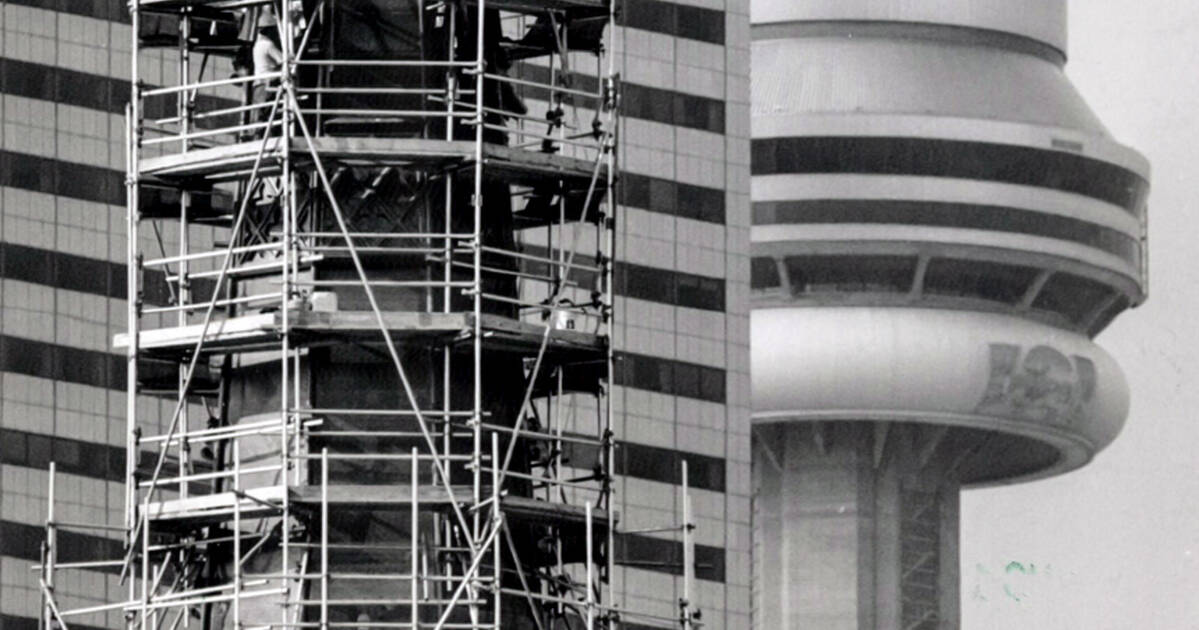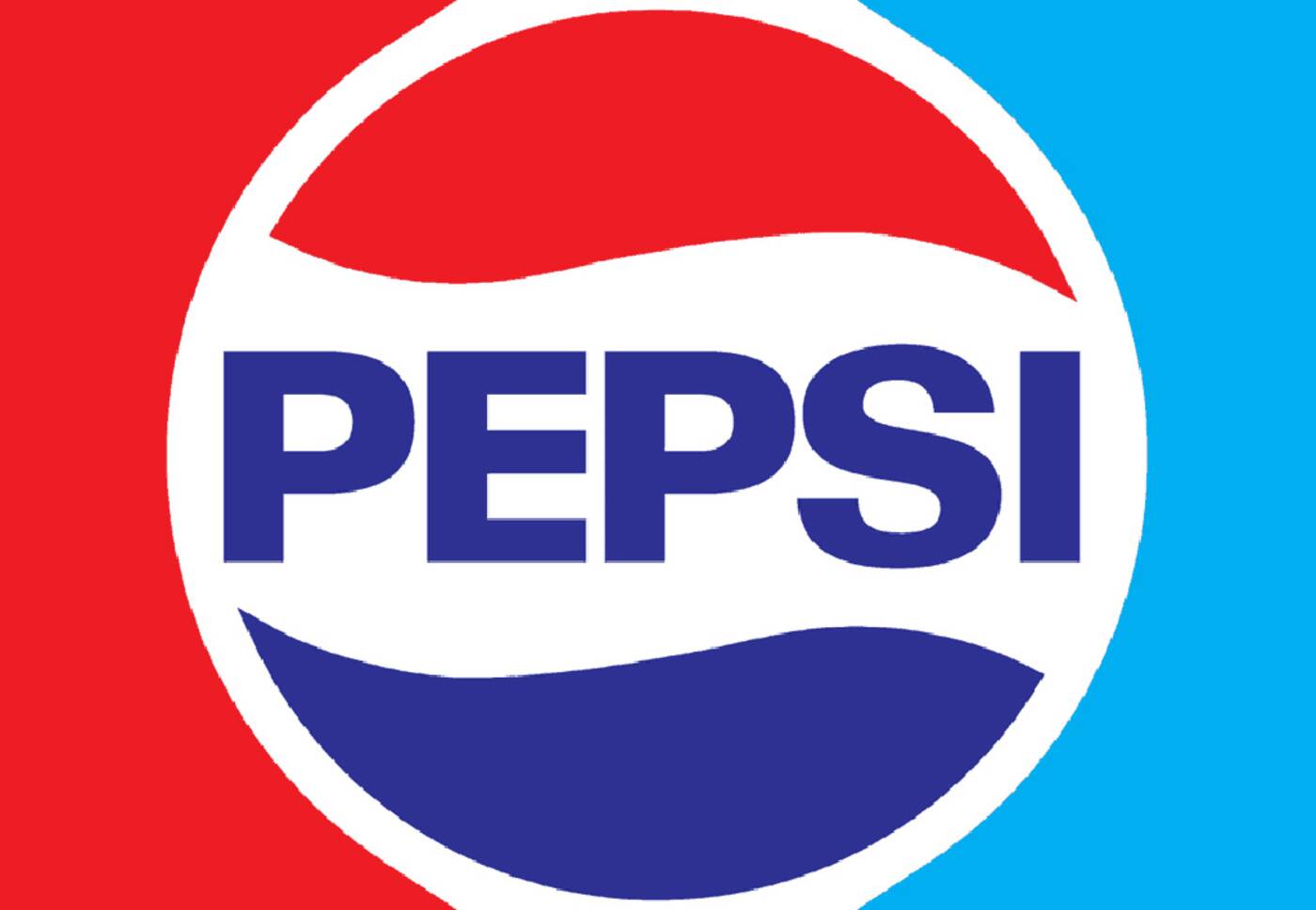
Do you remember seeing a faded Pepsi logo on the CN Tower’s radome a long time ago?
The radome — that white doughnut shaped ring which protects the microwave equipment at the base of main pod — once bared a phantom reminder of the excesses of the 1980s cola wars, hanging over the skies of Toronto like a giant sugar-water stain for over a decade.
If you do remember it, you are not alone. For some skeptics however, memories of the ghostly Pepsi sign have recently been labeled a local example of the Mandela Effect, a popular internet phenomena named after those strange moments when large numbers of people recall something in a particular way that's wrong or slightly misremembered.
It's named after the curiously great number of people who swear that they saw news reports of Nelson Mandela dying in prison in the 1980s when in fact we know he lived until 2013 (other popular examples include a genie movie starring Sinbad called SHAZAAM! and the notion that the Berenstain Bears were originally called the Berenstein Bears).
The Mandela Effect was the subject of a new episode of The X-Files, wherein the true name of the phenomena itself was called into question (it’s really called the Mingela Effect for those paying attention).
What makes the Pepsi ghost logo such prime fodder for proponents of the Mandela Effect is the fact that not only do many people dispute it ever existed, those who do remember it have wildly differing ideas of when it actually occurred (was it the 80s? the 90s? or 2002?), or what it actually was (a sticker? a banner? a laser show?).

You can see the adhesive remains from the the Pepsi logo in this photo from the Toronto Archives.
Further muddying the waters is the lack of any decent photographs detailing the stained logo remnant, or even a single photograph of the supposed original logo before it disappeared.
There exists no official explanation of what it was online; however internet sleuths have popped up over the years attempting to explain it away.
The truth of the ghosting Pepsi logo seems to suggest that no official record was kept of the occurrence because it was an embarrassment for all parties involved.
The brainchild of Pepsi’s maverick group marketing director at the time Roger Baranowski, Pepsi-Cola Canada in association with radio station CFNY 102.1 organized an event called “Pepsi Lights” a laser spectacle atop the CN Tower which ran from late 1986 until early 1987 on a semi-regular basis.

The classic Pepsi logo, which temporarily adorned the CN Tower.
The classic 1980s Pepsi logo (created in 1973 and used through until the end of the 1980s) indeed did adorn the CN Tower’s radome, and was created using coloured gels which were stuck to the inside of the radome with an adhesive.
More on the Pepsi mystery: The logo first appeared on the CN Tower in December 1986 as part of a sponsorship deal for a laser light show. Shabby condition possibly a botched attempt at removal. pic.twitter.com/5gghuP4eoN
— Chris Bateman (@chrisbateman) January 30, 2018
Although few online commentators recall what the laser-driven “Pepsi Lights” show actually looked like, letters to the editor of the Toronto Star from the time reveal a split between those who thought it was cool and those who thought it was a tacky exploitation of a local landmark.
Sadly, attempts to track down video or pictures of the “Pepsi Lights” show have proven to be futile.
When the promotion ended in early 1987, it became apparent that the adhesive used had interacted with the fabric of the radome and left a brownish outline of the logo when the gels were removed.
The Pepsi Lights laser show was actually pretty cool. I saw the set-up for it, it looked like a hippy with a physics degree built it. Stupidly powerful argon laser firing into a lot of beam splitters, and galvanometer servo mirrors.
— Rob Cruickshank (@robcruickshank) January 30, 2018
Quite how the engineers responsible had not anticipated such an effect remains unknown, but the Pepsi ghost logo haunted the Toronto sky until 2002 when the entire radome was replaced.
While it could be argued that Pepsi-Cola Canada got some serious bang-for-their-buck with a logo placement that lasted nearly 16 years on a prime piece of Toronto real estate, the truth is that for 15 and a half of those years it was a blight that most people either didn’t notice or thought was a messy brown stain.
So, not quite the Mandela Effect, but an interesting early use of the Tower as a giant billboard (later initiatives included a Windows ‘95 launch and a Walt Disney World promotion) and a reminder that our collective memories will always be somewhat unreliable.
Thanks to Chris Bateman, Rob Cruickshank, and Tony Chapman for helpful sleuthing efforts. Ed Conroy's Retrontario plumbs the seedy depths of Toronto flea markets, flooded basements, thrift shops and garage sales, mining old VHS and Betamax tapes that less than often contain incredible moments of history that were accidentally recorded but somehow survived the ravages of time. You can find more amazing discoveries at www.retrontario.com.
by Ed Conroy via blogTO

No comments:
Post a Comment